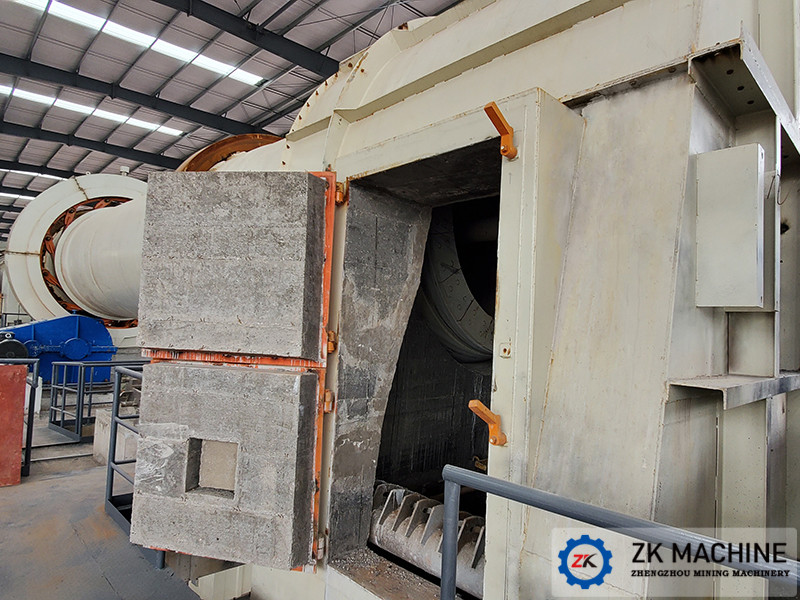The following aspects should be paid attention to when watching the fire of rotary kiln:
1. Incoming material size:
Observing the size of the incoming material, you can see from the side of the flame slightly off the edge of the material when rolling, you can see that there is a dark gray thing rolling behind the fiery red clinker, which can be called raw meal or black shadow. Under normal circumstances, the black shadow gradually moves forward, with uniform thickness, flowing in the middle of the flame. When the shadow changes from black to red in the high temperature part of the flame, the raw meal is burned into clinker.

2. Material status:
Observed from the fire hole into the kiln, the clinker particles are uniform and small, with a few larger particles mixed in it, rolling flexibly, without any influence on the clarity of the fire.
3. The color and shape of the flame:
During normal calcination, the flame is smooth, lively and powerful, the front part is bright, the middle part is white, the back part is black, the ideal shape is similar to the head of a brush, the length is appropriate, complete and stable, no return air, no local high temperature, no dispersion, no softness and no Shabu kiln skin.
4. Air-coal coordination:
When the air-coal is properly combined, the flame is complete and smooth. For a long time, the flame will be red, soft and weak, the fire will be slow, and the combustion will be incomplete. In severe cases, coal particles will fall and blue flames will appear on the surface of the clinker. If the flame is weak and shrinks continuously, it means that the exhaust air is large. On the contrary, the flame is short and concentrated to death, cooling with white gas, indicating that the exhaust air is small.
.jpg)
5. Kiln tail temperature:
The temperature of the exhaust gas at the kiln tail is different due to different kiln types, different production methods, different factory conditions, and many influencing factors. The control cannot be unified, but the smaller the temperature fluctuation range, the better. The main method of controlling the temperature at the end of the kiln is to increase or decrease emissions. The temperature of the kiln tail is the main indicator of whether the heat is stable and the blanking is normal. The change of the kiln tail temperature can roughly predict the condition of the blanking and incoming materials, so a stable kiln tail temperature can ensure normal calcination. Therefore, when looking at fireworks, you should pay attention to the temperature at the end of the kiln. If the temperature fluctuates, you should observe it frequently, pay attention to changes, and adjust in time.




















.jpg)
